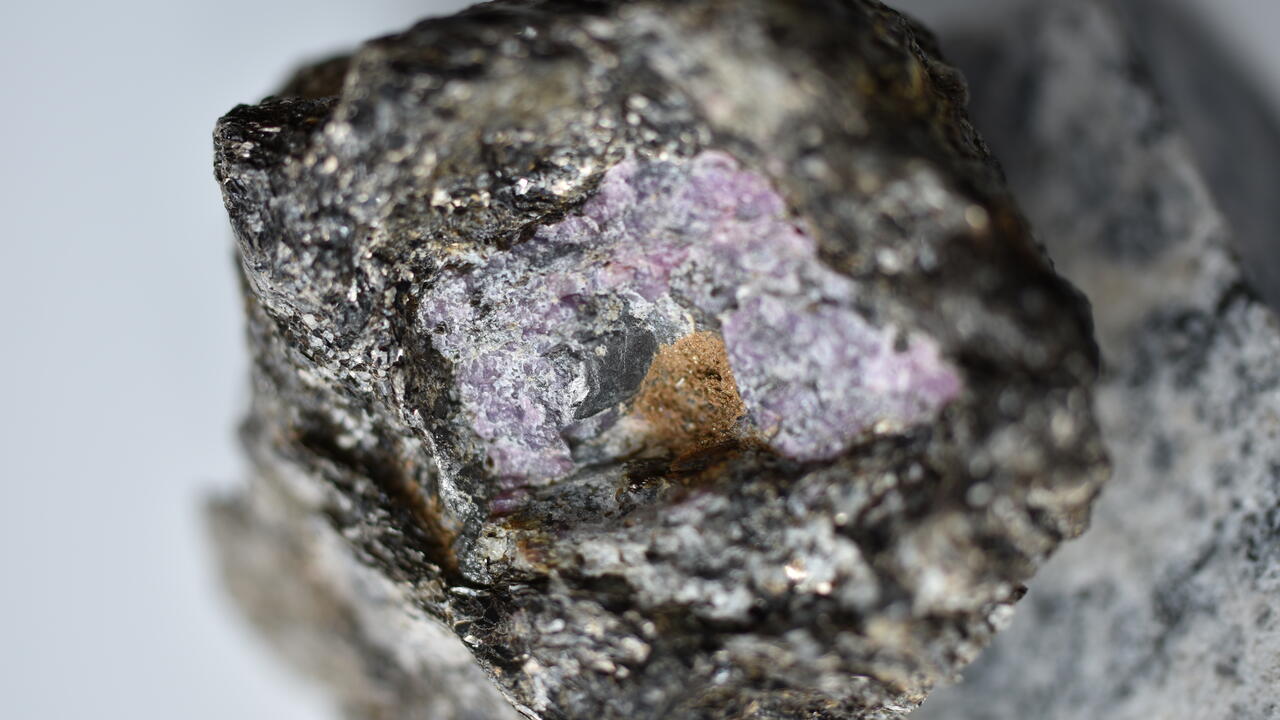2.5 billion-year-old traces of life locked inside primeval ruby
"The graphite inside this ruby is really unique."

Traces of ancient life were locked inside a 2.5 billion-year-old ruby from Greenland, according to a new study.
The planet's oldest rubies, sparkling red gemstones made up of a transparent red mineral called corundum, are found in Greenland. While searching for rubies in the North Atlantic Craton of southern Greenland, a group of researchers discovered a hidden surprise in one of them: graphite, a pure form of carbon, that may be the remains of ancient microbial life.
"The graphite inside this ruby is really unique," Chris Yakymchuk, a professor of Earth and Environmental Sciences at the University of Waterloo in Ontario, Canada, said in a statement. "It's the first time we've seen evidence of ancient life in ruby-bearing rocks."
Related: Sinister sparkle gallery: 13 mysterious & cursed gemstones
The team concluded the graphite came from an ancient life-form, after they analyzed the ratio of different versions, or isotopes, of carbon in the graphite, according to the statement. More than 98% of the carbon on the planet has a mass of 12 atomic mass units, but some carbon atoms are heavier, with a mass of 13 or 14 atomic mass units.
"Living matter preferentially consists of the lighter carbon atoms because they take less energy to incorporate into cells," Yakymchuk said. "Based on the increased amount of carbon-12 in this graphite, we concluded that the carbon atoms were once ancient life, most likely dead microorganisms such as cyanobacteria."
At the time this ancient bacteria likely lived, the planet did not have much oxygen — an indispensable element for complex life — so the only life that could eke out an existence were teeny microbes and algae films. Cyanobacteria are thought to be some of the first life on Earth, and through billions of years of converting sunlight into chemical energy, they gradually produced the oxygen necessary for complex life to eventually evolve, Live Science previously reported.
Sign up for the Live Science daily newsletter now
Get the world’s most fascinating discoveries delivered straight to your inbox.
Though ancient, this graphite-containing ruby is hardly the oldest evidence of life found so far. In fact, there are many studies, a lot of them hotly debated, that claim to have found the oldest evidence of life dating back to over 3 billion years, Live Science previously reported.
This is however, the first time ancient life has been found inside rubies. "The presence of graphite also gives us more clues to determine how rubies formed at this location, something that is impossible to do directly based on a ruby's colour and chemical composition," Yakymchuk said
It turns out that life may have been the secret ingredient for the ruby formation. The research found the graphite altered the chemical composition of the rocks, creating the right conditions for the rubies to grow.
The findings are published in the November issue of the journal Ore Geology Reviews.
Originally published on Live Science.

Yasemin is a staff writer at Live Science, covering health, neuroscience and biology. Her work has appeared in Scientific American, Science and the San Jose Mercury News. She has a bachelor's degree in biomedical engineering from the University of Connecticut and a graduate certificate in science communication from the University of California, Santa Cruz.










